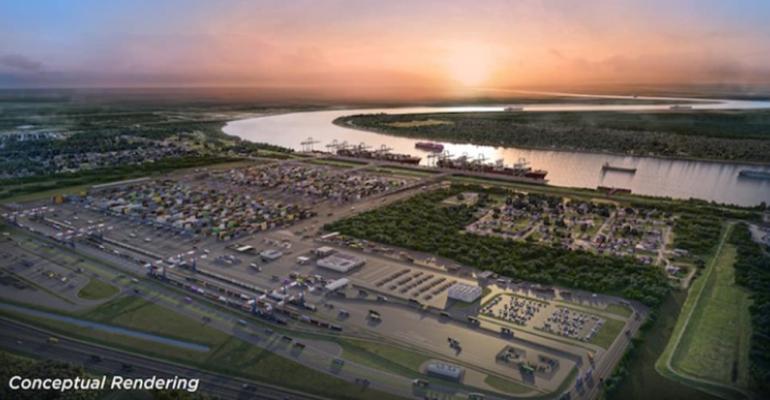For many years, and even prior to the recent emphasis on cleaner fuels, transport planners have been looking for solutions to congested, and sometimes crumbling, motorways throughout the country- including in what is variously described as “The Heartland” or “Middle America”. Increasingly, a confluence of concerns about infrastructure and emissions is emerging. Notably, one hallmark of the Biden administration was the Infrastructure Bill, bi-partisan legislation that could provide $1.2 trillion for projects overall which was signed into law in late 2021.
One important effort for shifting cargo from the motorways to the inland waterways has been underway since 2017, when facilities in the St. Louis region, on the Mississippi River, signed a Memorandum of Understanding (MOU) with the Port of New Orleans (Port NOLA) with the aim of building up business between the ports.
The cooperation gained momentum throughout the “supply chain disruptions” of 2020 through early 2022; increasingly, cargo interests worked hard to find alternatives to moving cargo ultimately bound for interior destinations through the congested hubs at Los Angeles/ Long Beach.
While cargo shifts to the East Coast ports have received more attention, movement through the Gulf Coast ports also provided alternatives for cargo interests. Increasingly, inland barge transport provides an important leg of the routing.
According to a press release from the St. Louis Regional Freightway, an organisation of supply chain participants in Missouri and in Illinois-across the river, and a group of ports in the region, “The establishment of the MoU led to increased traffic flow of cargo between the middle of America and Port NOLA, which is strongly rooted in container-on-barge service. The container-on-barge service moves an average of 30,000 teu per year between New Orleans, the Port of Greater Baton Rouge, Memphis and now St. Louis.”
A spokesperson for the Freightway told Seatrade Maritime News: “Port NOLA’s regular container on barge service is offered by Seacor AMH. The service has reduced more than 11,000 short tons of carbon dioxide (CO2) emissions and saved 1 million gallons of diesel fuel.” Seacor AMH had also been an early proponent of carbon offset purchases; Seacor’s SCF Division operates multiple terminals in the St. Louis region - between mile markers 177 and 186 on the upper Mississippi River.
The cooperation between St. Louis and Nola took a further step forward last week, with ports in the region and the St. Louis Regional Freightway announcing its support for the Port NOLA in their development process to seek Federal infrastructure funding for the proposed Louisiana International Terminal (LIT), a $1.8 billion facility that would be located on the Lower Mississippi River, at Mile Marker 83, below New Orleans.
Proponents of the LIT, which “is at the beginning of the federal permitting process… expected to last until 2025, with Phase 1 of the terminal opening in 2028”, say that “At opening, we anticipate the terminal will accept between 180,000 - 280,000 containers in the first year.”
They add that: “The number of containers traveling through the terminal will grow over time as the terminal is built. We estimate it may take 25 years to reach the terminal's maximum annual capacity, which is 2 million teu per year.”
Reader resource: https://louisianainternationalterminal.com/
Copyright © 2024. All rights reserved. Seatrade, a trading name of Informa Markets (UK) Limited.
Add Seatrade Maritime News to your Google News feed.  |

